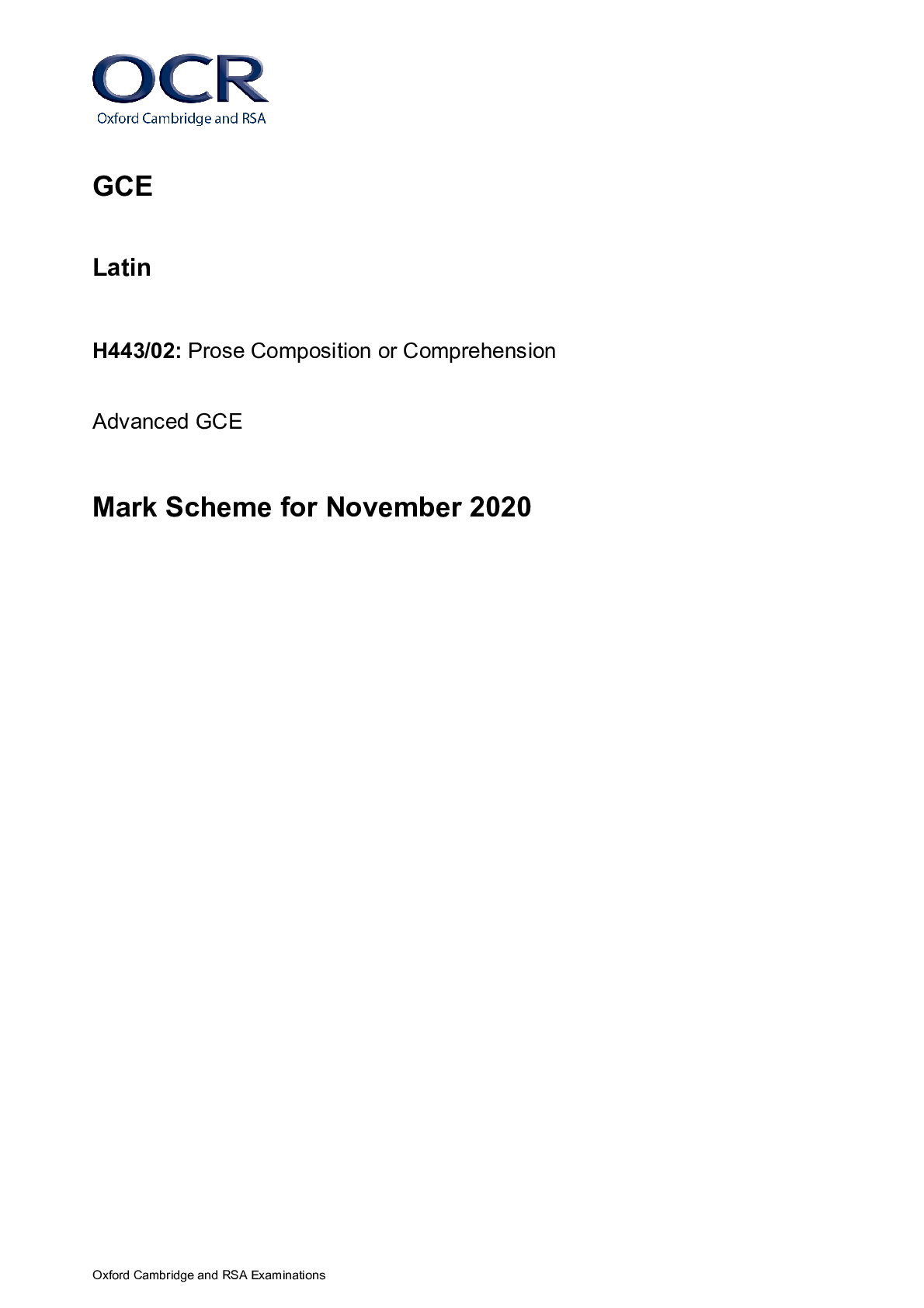History > GCSE MARK SCHEME > GCSE (9–1) Latin J282/05: Verse Literature B General Certificate of Secondary Education Mark Schem (All)
GCSE (9–1) Latin J282/05: Verse Literature B General Certificate of Secondary Education Mark Scheme for November 2020
Document Content and Description Below
GCSE (9–1) Latin J282/05: Verse Literature B General Certificate of Secondary Education Mark Scheme for November 2020 Oxford Cambridge and RSA Examinations GCSE (9–1) Latin J282/05: Vers... e Literature B General Certificate of Secondary Education Mark Scheme for November 2020Oxford Cambridge and RSA Examinations OCR (Oxford Cambridge and RSA) is a leading UK awarding body, providing a wide range of qualifications to meet the needs of candidates of all ages and abilities. OCR qualifications include AS/A Levels, Diplomas, GCSEs, Cambridge Nationals, Cambridge Technicals, Functional Skills, Key Skills, Entry Level qualifications, NVQs and vocational qualifications in areas such as IT, business, languages, teaching/training, administration and secretarial skills. It is also responsible for developing new specifications to meet national requirements and the needs of students and teachers. OCR is a not-for-profit organisation; any surplus made is invested back into the establishment to help towards the development of qualifications and support, which keep pace with the changing needs of today’s society. This mark scheme is published as an aid to teachers and students, to indicate the requirements of the examination. It shows the basis on which marks were awarded by examiners. It does not indicate the details of the discussions which took place at an examiners’ meeting before marking commenced. All examiners are instructed that alternative correct answers and unexpected approaches in candidates’ scripts must be given marks that fairly reflect the relevant knowledge and skills demonstrated. Mark schemes should be read in conjunction with the published question papers and the report on the examination. © OCR 2020J282/05 Mark Scheme November 2020 2 Annotations Annotation Meaning Unclear (use rarely, possibly in case of illegibility) Benefit of doubt (may be used, but sparingly) Cross (use very sparingly, to indicate something to which you are not giving credit) Extendable horizontal line (more serious error in translation questions) Extendable horizontal wavy line (inconsequential error in translation questions) Tick (use as appropriate to show where marks have been awarded or points are being credited in the longer answer) + Tick plus (A strong point in Q 2) ? Tick query (A slight or incomplete point in Q2) Harmful addition Repeated or consequential error Omission mark (use in translation questions and elsewhere if desired) seen Use on an extra page or in white space to show that candidate material has been seen and considered BP Blank Page: mark any page that is blankJ282/05 Mark Scheme November 2020 3 Question Answer Mark Guidance 1 (a) a son of Priam AO2 1 Priam must be named but ignore minor mis-spelling. 1 (b) colonnades/corridors/galleries/porticos (1) halls/court(yard)s (1) AO2 2 Accept singular in each case. Do not accept ‘porches’, ‘halls’ for porticibus Do not accept atrium(s)/atria for atria 1 (c) He was wounded. AO2 1 1 (d) Accept any two points and award up to two each. Assess against point-by-point marking grid below. 2 expresses a valid point based on a relevant aspect of literary style, with accurate, relevant and suitably explained reference to Latin 1 expresses a valid point, but is not fully supported by an appropriate aspect of literary style or reference to Latin 0 point is not valid, or none is drawn Accept any two of the following or other valid points: ardens – vivid vocab/metaphor: shows Pyrrhus’ eagerness to pursue and kill Polites. infesto – forceful adjective: stresses the danger that Pyrrhus threatens. Pyrrhus – delaying his name to the end of the line builds up tension. insequitur – emphatic position: resolves the tension/stresses the pursuit; prefix stresses how close he is. iam iamque – ‘at every moment’: repetition gives urgency and shows Polites is on point of death. AO3 4 A point of style must be identified for the full mark; points of style may include selection of a particular piece of vocabulary as well as sound and position of words, figures of speech such as repetition, historic present etc. Award 2 marks for: a relevant style point + appropriate Latin reference + explanation of how the example adds to the drama of the scene. Award 1 mark if only two of the above features are present. Candidates must indicate (by translation or in their explanation) that they know what the chosen word or phrase means and must show how it makes the passage dramatic. Accept points of style not mentioned in the list opposite if the candidate convincingly shows that it adds to the drama.J282/05 Mark Scheme November 2020 4 insequitur/ tenet/ premit – historic present gives immediacy to scene. oculos ... ora – tautology emphasises the horror of his parents’ witnessing their son’s fate. concidit - enjambement/emphatic position/short vowels and clipped consonants emphasise this key moment evasit/ concidit/, fudit – sudden reversion to perfect tense gives sense of finality with no further escape possible. multo/ fudit – strong emphasis on the extent of the blood loss – enclosing word order/graphic imagery creates vivid sceneJ282/05 Mark Scheme November 2020 5 Guidance on applying the marking grids for the 8-mark extended response This question focuses on candidates’ ability to select relevant examples of content and literary style and to structure an answer around these examples to express relevant points. Candidates will therefore be assessed on the quality of the points made and the range and quality of the examples they have selected from the passage. Examiners must use a best fit approach to the marking grid. Where there are both strengths and weaknesses in a particular response, examiners must carefully consider which level is the best fit for the performance overall. Level Marks Description 4 7–8 • very good engagement with the question • expresses a range of relevant points, with good development, drawn on a range of well selected aspects of content and features of literary style, with a good range of appropriate quotation with well thought out discussion The response is logically structured, with a well-developed, coherent line of reasoning. 3 5–6 • good engagement with the question • expresses a range of sound points, with some development, drawn on a range of relevant aspects of content and features of literary style, with a range of appropriate quotation, with sound discussion The response is well structured with a clear line of reasoning. 2 3–4 • some engagement with the question • expresses some points drawn on a limited range of aspects of content and/or features of literary style, with some appropriate quotation and some discussion The response presents a line of reasoning which is mostly relevant but may lack structure. 1 1–2 • little engagement with the question • expresses points which are of little relevance and are supported with little evidence from the set text The information is communicated in an unstructured way.. 0=No response or no response worthy of credit.J282/05 Mark Scheme November 2020 6 Question Answer Mark Guidance 2 Answers may include: altaria ... traxit: − Pyrrhus dragged him (though he is an old man and a king) – to the altar, violating a sacred place – TR alliteration: echoes old man’s frailty and fear lapsantem: – slipping in his son’s blood: horrible detail multo: – horror emphasised by the quantity of blood implicuit comam: – emphasises the indignity of Priam’s death coruscum: – sword glitters as he draws it – emphatic position highlights weapon about to kill – hard C alliteration suggests sharp edge ensem: – hyperbaton/delay of ensem: lays heavy emphasis on the weapon/gives sense of finality capulo tenus abdidit: – piling up of detail emphasises depth of thrust – level of violence used against an old man haec finis ... hic exitus: tautology emphasises that everything is over for Priam Troiam incensam, prolapsa Pergama: – Priam has witnessed the total destruction of his city tot populis terrisque, superbum regnatorem: – emphasis on his former glory, contrasting with his current state iacet ... corpus: – final shocking details: no burial, desecration of body, his memory wiped out avulsum – violent vocabulary AO3 8 Assess the whole answer against the criteria in the Marking Grid above. To access levels 3 & 4 the answer must contain points of content and features of literary style. There must be at least two relevant stylistic points for level 4 and at least one for level 3. Latin quotation is not needed for every point but there must be some relevant Latin reference to gain marks in levels 3 & 4.J282/05 Mark Scheme November 2020 7 Question Answer Mark Guidance 3 Either He can hear the fire (1) more clearly(1) Or The heat is getting (1) more intense (1) AO2 2 The fire is getting louder = 2 The heat is getting closer/the fire is getting hotter = 2 The fire is getting closer = 1 Accept a literal translation for 2, provided that it is intelligible.J282/05 Mark Scheme November 2020 8 Guidance on applying the marking grids for the 5-mark set text translation The mark scheme awards marks for the proportion of sense communicated. If a candidate has communicated the ‘gist’ of a sentence (e.g. they know who has done what to whom) they will score 5, 4 or 3 marks. If they have not understood the basic sense of the sentence, they will score a maximum of 2. A completely correct translation with no omissions or errors will always score 5. The key judgment for a candidate who has demonstrated understanding of the overall meaning of the sentence is whether they should score 5, 4 or 3. This will depend on the gravity of their errors/omissions and may depend on the number of words in the sentence to be translated or the difficulty of the Latin and is usually decided at standardisation after a judgment has been formed about the performance of candidates. The final decisions on what constitute ‘inconsequential’ and ‘more serious errors’ will be made and communicated to assessors via the standardisation process (after full consideration of candidates’ responses) and these decisions will be captured in the final mark scheme for examiners and centres. A word containing more than one error should be treated as a maximum of one serious error. Repeated and consequential vocabulary errors should not be penalised. Question Answer Mark Guidance 4 Assess against criteria given above and in the 5- mark AO2 grid opposite ‘vos, famuli, quae dicam animis advertite vestris. est urbe egressis tumulus templumque vetustum desertae Cereris, iuxtaque antiqua cupressus religione patrum multos servata per annos; hanc ex diverso sedem veniemus in unam.’ Suggested translation: ‘(You), slaves, fix in your minds what I’m going to say. As you leave the city there is a mound and an ancient temple of abandoned Ceres/ deserted old temple of Ceres, and next to it an ancient/old cyprus, preserved over many years by the religious feelings of our forefathers; from our various starting points we will come to this one place.’ omission or mistranslation of any word is a major error unless indicated below. inconsequential errors: famuli translated as ‘family egressis – outside unam omitted 5 Perfectly accurate with no errors or omissions, or one inconsequential error. 4 Essentially correct but two inconsequential errors or one more serious error. 3 Overall meaning clear, but more serious errors or omissions. 2 Part correct but with overall sense lacking/unclear. 1 No continuous sense; isolated knowledge of vocabulary only. For 1 mark there must be at least three correct words, excluding est, -que, ex, in Accept present tense for dicam Accept ‘the same’ for unamJ282/05 Mark Scheme November 2020 9 Question Answer Mark Guidance 5 (a) (images of) household/ancestral gods (1) AO2 1 Accept any reasonable translations of penates. Do not accept ‘penates’ as an answer without any further explanation. 5 (b) He won’t touch the sacred objects/penates (1) either because he has been fighting/has blood on his hands(1) or until he has washed (in running water)/cleansed himself/purified himself(1) AO3 2 Accept a wide variety of paraphrase that conveys the two essential points Question Answer Mark Guidance 6 (a) (i) either umeros (1) = shoulder(s)(1) or colla (1) = neck (1) AO2 2 Valid Latin word + incorrect translation = 1 Invalid Latin word + any translation = 0 6 (a) (ii) his father AO2 1 Do not accept ‘Anchises’. 6 (a) (iii) His father was crippled/couldn’t walk/had been struck by Jupiter’s thunderbolt AO2 1 Accept reasonable explanations of why his father might need to be carried, such as ‘he was very old and frail’. The reason given must relate to Anchises. 6 (b) He held his father’s hand (1) His steps were not equal to/shorter than his father’s (1) AO3 2J282/05 Mark Scheme November 2020 10 Question Answer Mark Guidance 7 (a) Accept any two points and award up to two each. Assess against point-by-point marking grid below. 2 expresses a valid point based on a relevant aspect of content or literary style, with accurate, relevant and suitably explained reference to Latin 1 expresses a valid point, but is not fully supported by an appropriate aspect of content or literary style or reference to Latin 0 point is not valid, or none is drawn ausus – he ‘dared’ to shout her name (despite the danger) voces iactare – ‘repeatedly threw his voice’: emphasises how loudly/frequently he shouted implevi ...vias – hyperbole stresses how much he shouted maestus – emphasises his sorrow at losing her Creusam – position and hollow sound of word echoes the repeated calling of her name nequiquam – emphasises his sense of frustration Assonance of E & I in line 3 suggests echo of repeated calling ingeminans iterumque iterumque – tautology and repetition stress how often he shouted AO3 4 Both content and style points are acceptable. A 2-mark answer needs a Latin reference with some indication of its meaning (whether by translation or through the explanation) and a convincing explanation of how it emphasises Aeneas’ desperation. If any of these elements is lacking the maximum is 1. 7 (b) (i) She was a ghost/phantom (1) She was larger than life (1) AO2 2 7 (b) (ii) his hair stood on end (1) his voice stuck in his throat/he couldn’t speak/he was struck dumb (1) AO2 2J282/05 Mark Scheme November 2020 11 Guidance on applying the marking grids for the 10-mark extended response Two Assessment Objectives are being assessed in this question – AO2 (Demonstrate knowledge and understanding of literature) and AO3 (Analyse, evaluate and respond to literature). The two Assessment Objectives are equally weighted. Examiners must use a best fit approach to the marking grid. Where there are both strengths and weaknesses in a particular response, particularly imbalanced responses in terms of the assessment objectives, examiners must carefully consider which level is the best fit for the performance overall. For example, you should not be able to achieve a mark of 8 made up of AO2 = 6 and AO3 = 2. Responses are credited for AO2 for the detail and accuracy of the knowledge of the set text they deploy and for their understanding of the set text(s). Responses are credited for AO3 for how well the response addresses the question, for candidates selecting relevant examples from the set texts they have studied and drawing and expressing conclusions based on the selected examples in relation to the question posed. Candidates will be assessed on the quality of the conclusions and points they argue and the range and quality of the examples they have selected. For example, in relation to the question ‘A tragic story with nothing to lighten the gloom.’ Is this a fair description of the parts of Aeneid 2 you have studied: giving details of what Creusa’ ghost says to Aeneas would be evidence of AO2, whilst concluding that the tragedy of losing Creusa is mitigated by the bright future that awaits Aeneas would be evidence of AO3. 10-mark grid for the extended response question AO2 = 5 marks = Demonstrate knowledge and understanding of literature AO3 = 5 marks = Analyse, evaluate and respond to literature Level Marks Characteristics of performance 5 9–10 • detailed knowledge and excellent understanding of the set text (AO2) • well-argued response to the question which is supported by a range of well-selected examples from the set text (AO3) The response is logically structured, with a well-developed, sustained and coherent line of reasoning. 4 7–8 • good knowledge and sound understanding of the set text (AO2) • a good response to the question which is supported by some well-selected examples from the set text (AO3) The response is logically structured, with a well-developed and clear line of reasoning. 3 5–6 • some knowledge and understanding of the set text (AO2) • a reasonable response to the question which is supported by some examples from the set text (AO3) The response presents a line of reasoning which is mostly relevant and has some structure. 2 3–4 • limited knowledge and understanding of the set text (AO2) • a limited response to the question which is occasional supported by reference to the set text (AO3) The response presents a line of reasoning but may lack structure. 1 1–2 • very limited knowledge and understanding of the set text (AO2) • a very limited response to the question with very limited reference to the set text (AO3) The information is communicated in an unstructured way. 0 = No response or no response worthy of credit.J282/05 Mark Scheme November 2020 12 Question Answer Mark Guidance 8 ‘A tragic story with nothing to lighten the gloom.’ Is this a fair description of the parts of Aeneid 2 you have studied? AO3: observations may include: • The story is certainly tragic − women, children and the elderly are defenceless victims who face an awful fate − the victorious Greeks are brutal and merciless − the city of Troy is burned and its power destroyed − Aeneas has to flee his home and loses his wife Creusa on the way • It has some more optimistic aspects − Aeneas and most of his family escape the destruction − Creusa, unlike the other Trojan women, will not go as a slave to Greece − a bright future is forecast for Aeneas eventually AO2: possible supporting evidence: • tragic: − description of Hecuba and her daughters clinging to the altar, like doves etc. Priam too weak and old to defend them. − details of Pyrrhus’ brutal and insulting treatment of Polites and Priam. − Aeneas’ mention of the fires raging through Troy. Reference to Priam’s former great power − Aeneas’ desperate search for the lost Creusa and discovery that she is dead; he can’t even clasp her to say goodbye. • optimistic − details of Aeneas’ organising his family (including slaves) to get them to safety. AO2 5+ AO3 5J282/05 Mark Scheme November 2020 13 − the household gods go with them and Aeneas’ line is secured through Iulus − Creusa’ reassurance that she will not go as a slave to Greece + her prophecy of what awaits Aeneas in Italy (wife, kingdom, prosperity) despite the hardships on the wayOCR (Oxford Cambridge and RSA Examinations) The Triangle Building Shaftesbury Road Cambridge CB2 8EA [Show More]
Last updated: 2 years ago
Preview 1 out of 15 pages

Buy this document to get the full access instantly
Instant Download Access after purchase
Buy NowInstant download
We Accept:

Reviews( 0 )
$7.50
Can't find what you want? Try our AI powered Search
Document information
Connected school, study & course
About the document
Uploaded On
Oct 07, 2022
Number of pages
15
Written in
Additional information
This document has been written for:
Uploaded
Oct 07, 2022
Downloads
0
Views
51

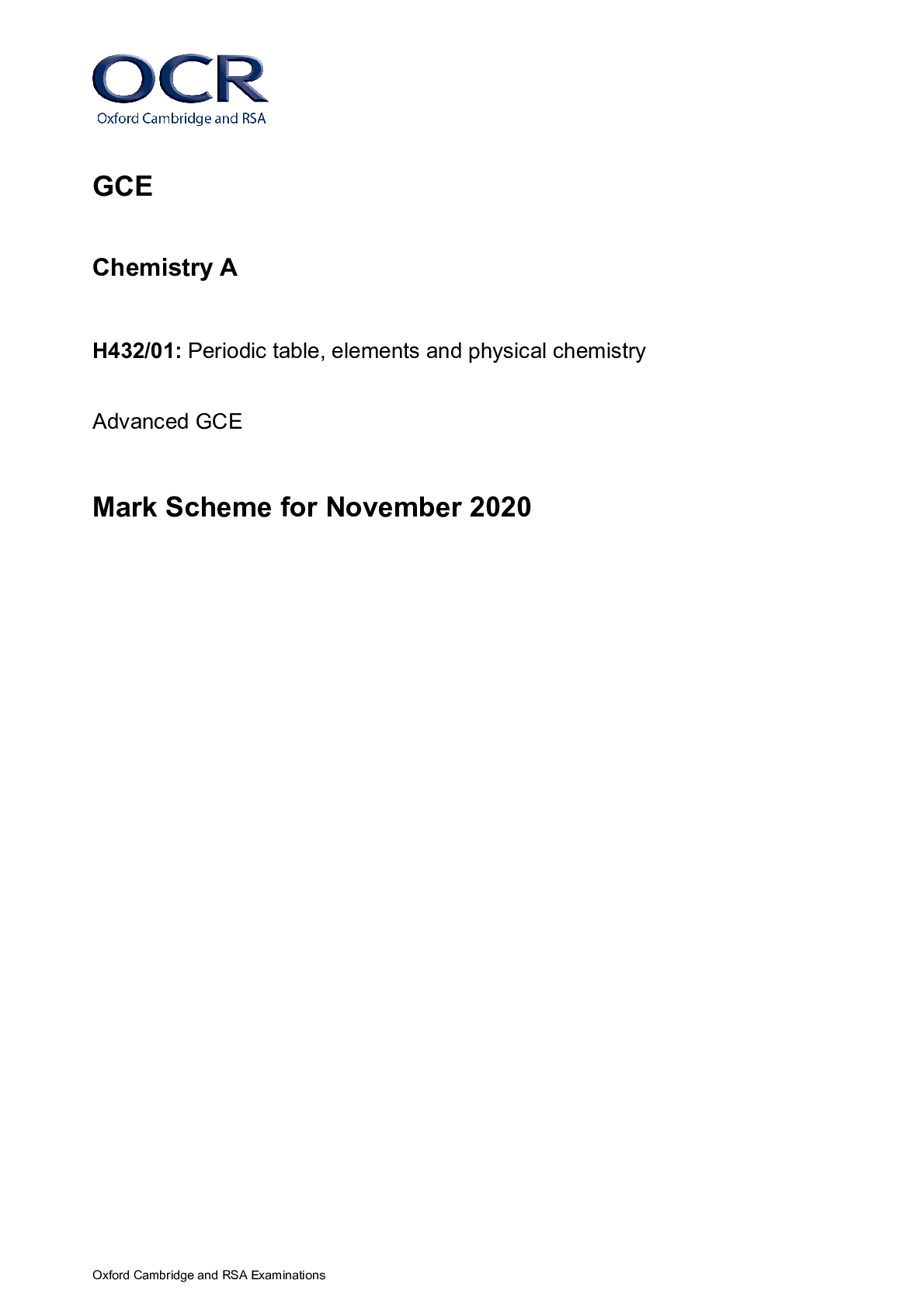
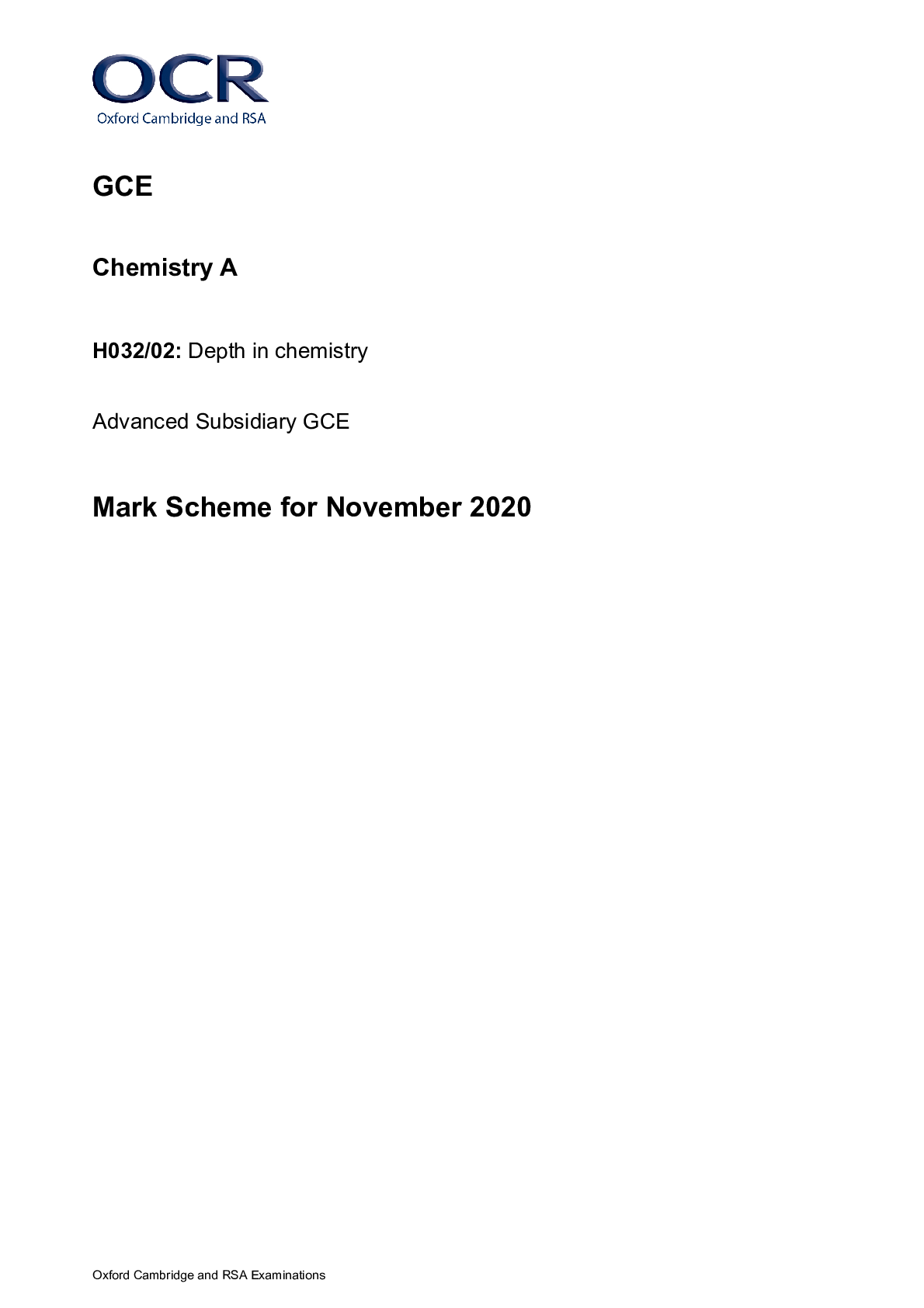

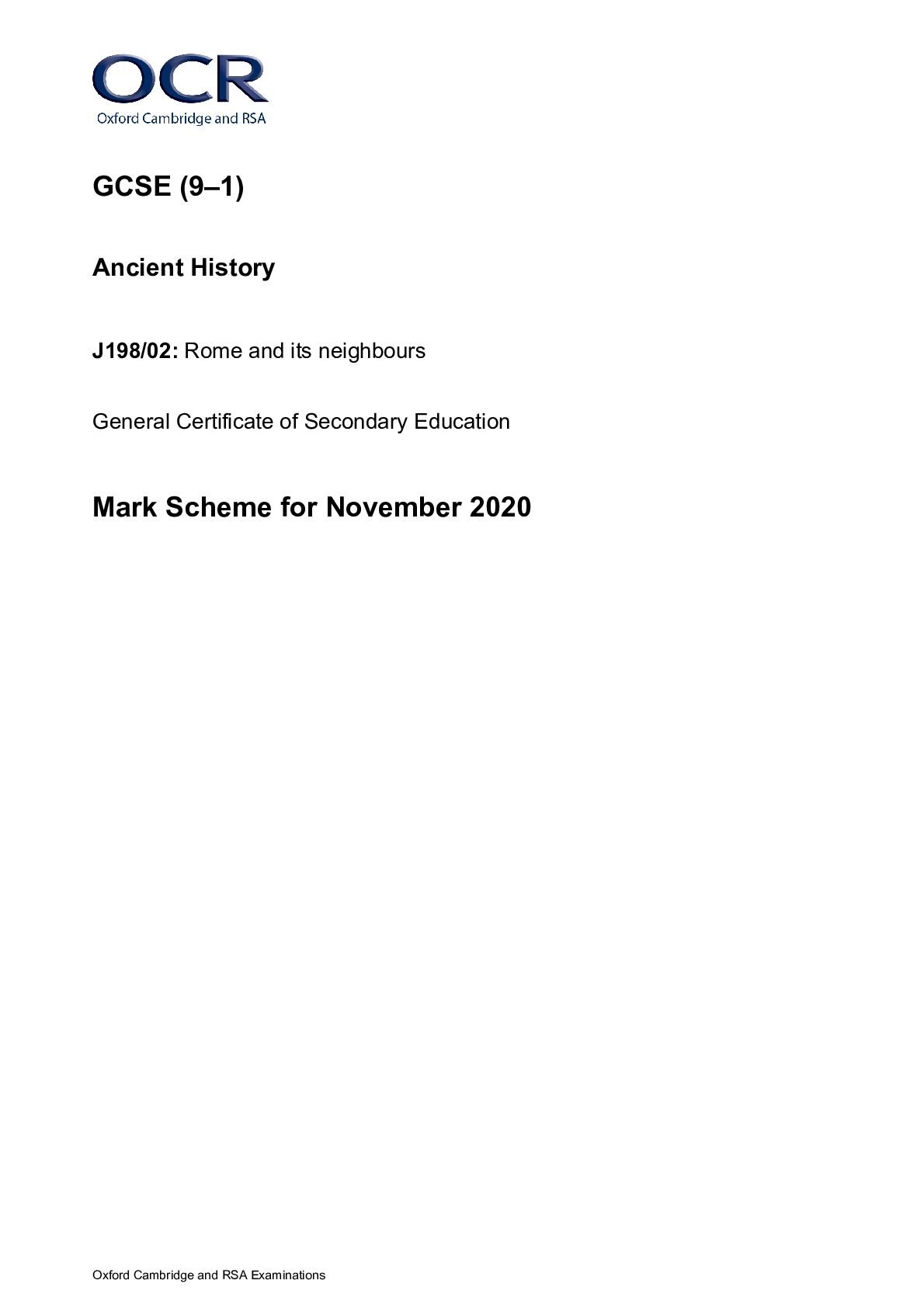




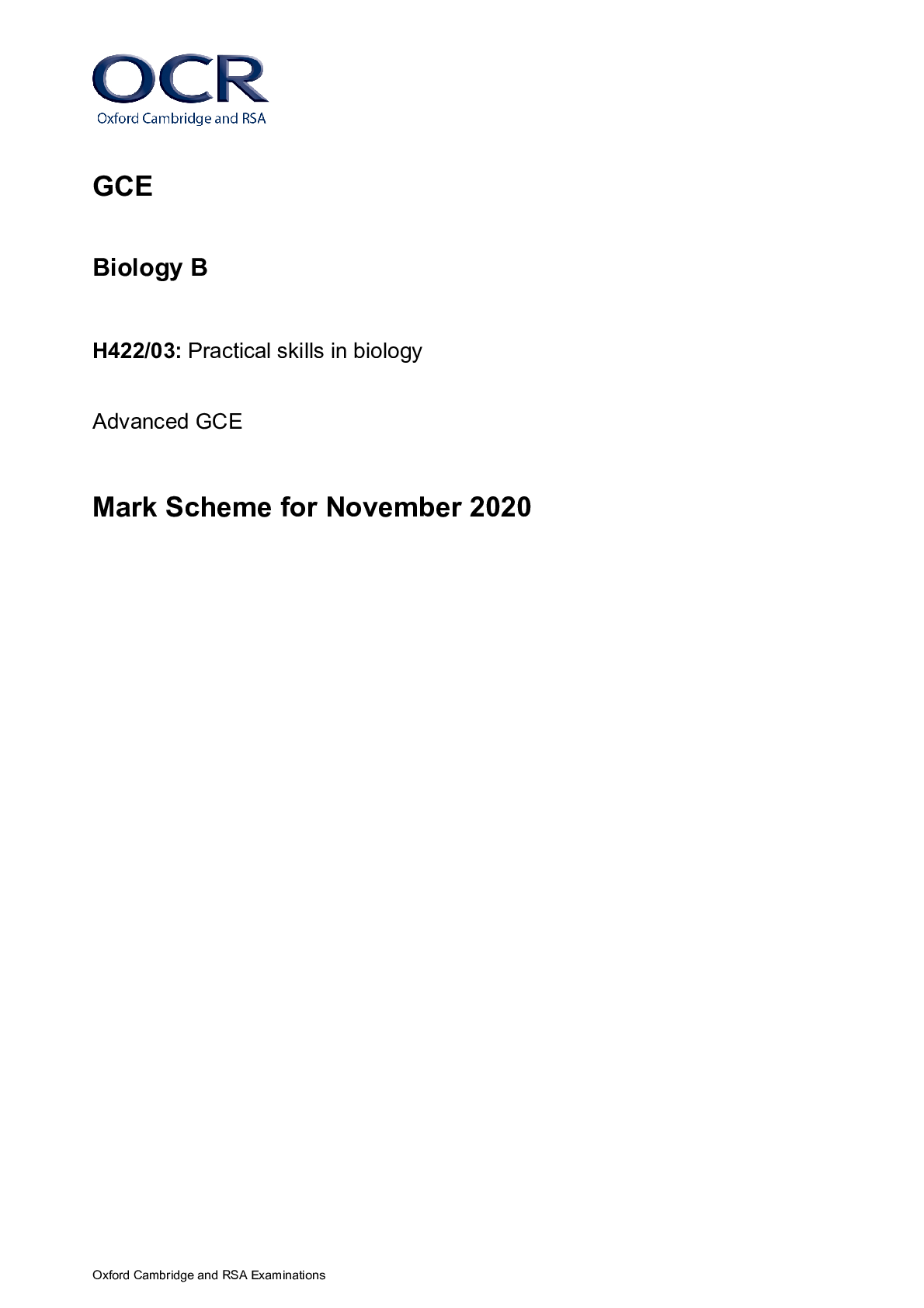
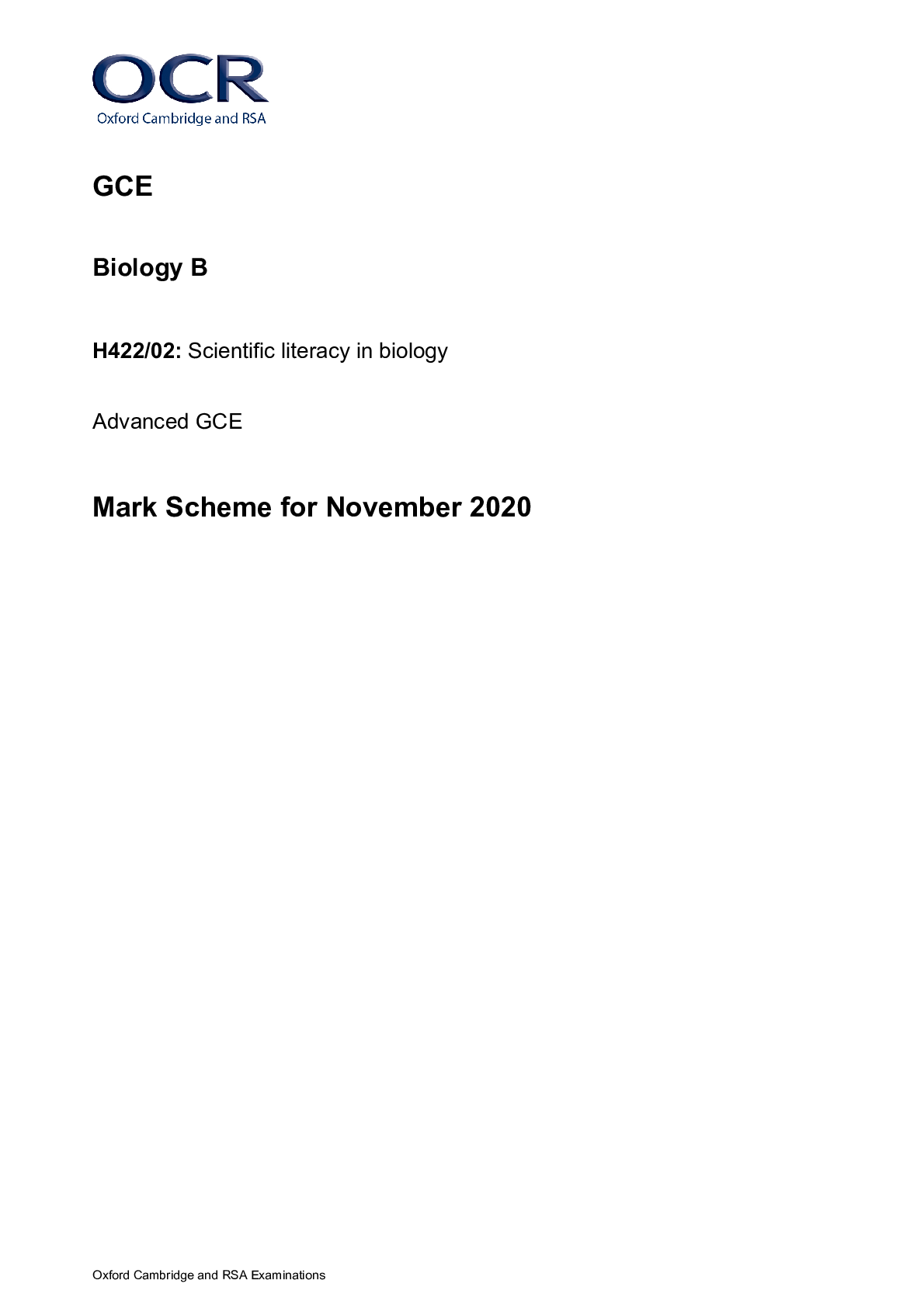
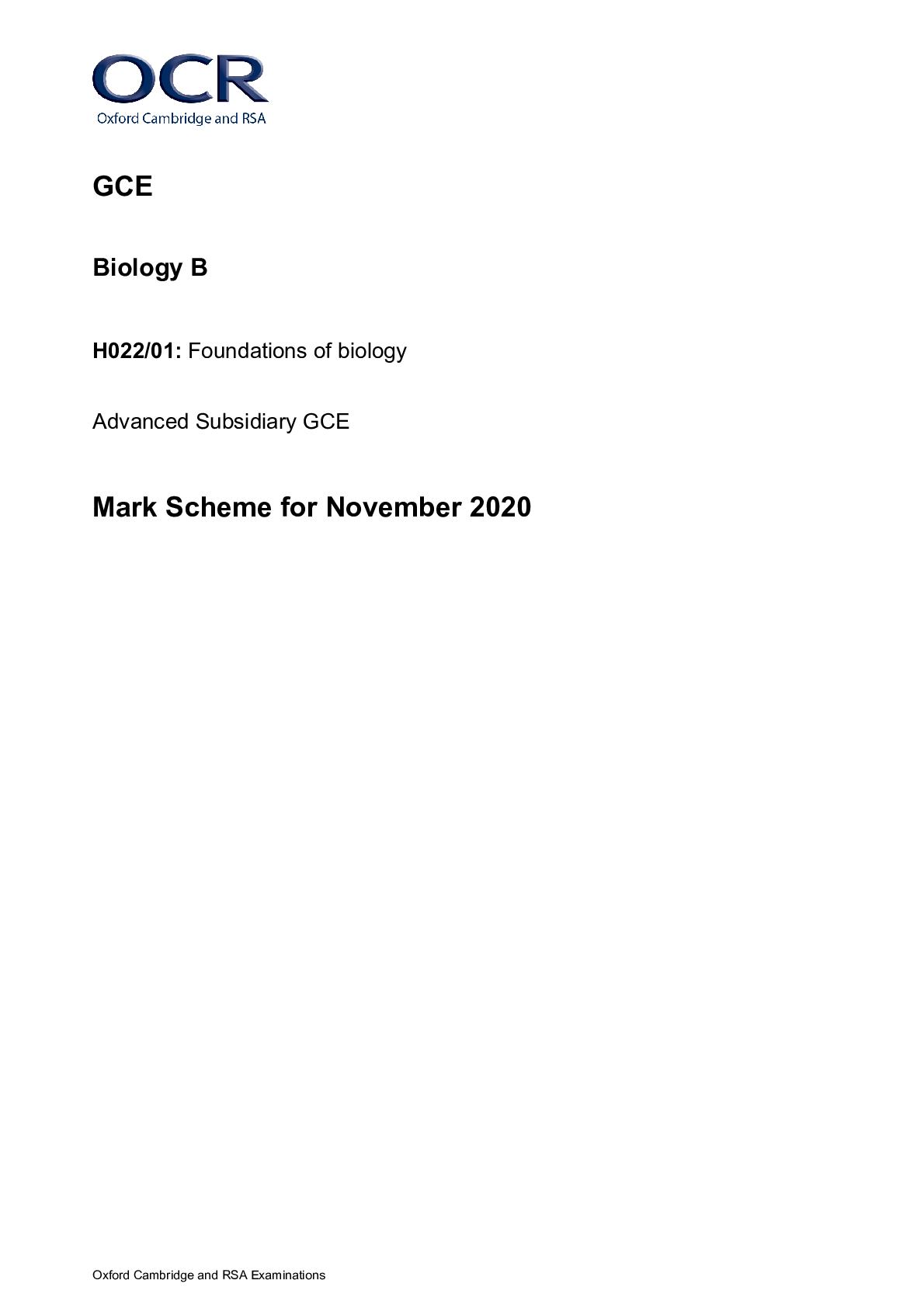



.png)
